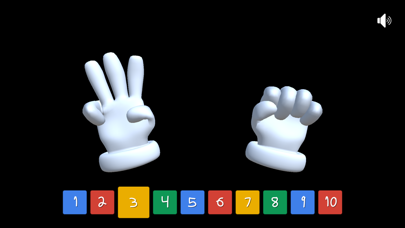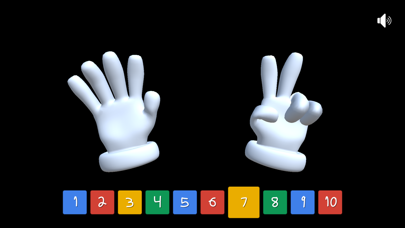Каждый день мы раздаем лицензионные приложения для iPhone БЕСПЛАТНО!
iPhone Giveaway of the Day - I Can Count to Ten
This giveaway offer has been expired. I Can Count to Ten is now available on the regular basis.
I Can Count To Ten is an easy to use app to help children learn to count to ten using their fingers.
Historically and among different cultures, humans have been relying on fingers or body parts to support their representation of numbers (Ifrah, 1994) and in occidental cultures, counting on fingers is one of the first strategies taught to children to link the verbal representation of a number with its numerical meaning (Gelman and Gallistel, 1978; Gallistel and Gelman, 1992; Butterworth, 1999; Sato and Lalain, 2008).
I Can Count To Ten uses changing sounds, color, and animation to attract and maintain attention and encourages the child to mimic what they see on the mobile device screen. The user interface consists of a screen with a black background, and a set of 3-D animated hands in the foreground that look similar to the cartoon hards of Mickey Mouse. A repeating animation shows the progression of retracted and extended fingers from 1 to 10, and a voice speaks each number aloud as each finger extends or retracts. If the child interacts with the mobile device screen by tapping or swiping, the animation will react accordingly, moving back, and forward to the correct number.
Although you can introduce the idea of numbers when your child is as young as 12 months by counting small sets of items like cookies, steps, and buttons, this app would be most beneficial to those children in the pre-operational stage of human development, approximately between the ages of two and seven years old. It is at this stage that children begin to understand, represent, remember, and picture objects in their mind without having it in front of them. It is also during this stage where they want to understand everything and begin to propose the questions of "why?" and "how come?" (Santrock 2014).
References
Butterworth, B. (1999). What Counts: How the Brain is Hardwired for Math. New York, NY: The Free Press.
Gallistel, C., & Gelman, R. (1992, Aug). Review Preverbal and verbal counting and computation. Cognition, pp. 44(1-2):43-74.
Gelman, R., & Gallistel, C. R. (1978). The Child’s Understanding of Number. Cambridge, MA: Harvard University press.
Ifrah, G. (1994). Histoire des chiffres, 2nd Edn. . Paris: Robert Laffont.
Nevid, J. S. (2017). Essentials of Psychology: Concepts and Applications. Cengage Learning; 5 edition.
Santrock, J. W. (2004). Life-Span Development (9th Ed. Boston, MA: McGraw-Hill College.
Sato, M., & Lalain, M. (2008, Apr). On the relationship between handedness and hand-digit mapping in finger counting. Cortex, pp. 44(4):393-9.
Разработчик:
Chris DeWeese
Категория:
Education
Версия:
1.0
Размер:
48.19 MB
Возраст:
4+
Языки:
English
Совместимость:
iPhone, iPad





Комментарии